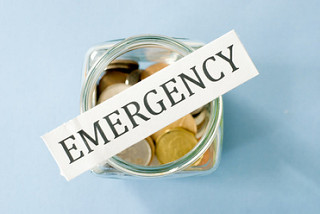
David Lerner Associates: The Importance of Building an Emergency Savings Fund
“The idea behind creating an emergency savings fund is to have money set aside in a liquid account to cover unexpected expenses that may pop up,” says David Lerner Associates Branch Manager Anthony F. Meere. “These often include things like car and home repairs and medical bills. When you have money set aside in an emergency account for these kinds of expenses, you may not have to pay for them with a credit card and possibly incur high interest charges.”
Survey Results Aren’t Promising
According to a recent survey by the Princeton Survey Research Associates International, however, many Americans are not heeding this advice. ll, the survey found. While half have saved less than three month’s worth of expenses in their emergency account, only a quarter of Americans have saved enough money in their emergency accounts to cover at least six month’s worth of expenses, which is the amount many experts recommend.
The study does indicate a slight improvement since before the recession, when just 39 percent of Americans had saved up three month’s worth of expenses.
Meere says there are many possible reasons why many Americans are failing to build adequate emergency savings. “One possibility, of course, is that many people are still trying to catch up financially from the effects of the recession. When people have lost their jobs for extended periods of time and/or lost their homes to foreclosure, they often end up living paycheck-to-paycheck, with little if any money left over for savings.”
The best way to get started building an emergency savings fund is just that: get started. “Open a savings or money market account at your bank or online and make a commitment to depositing some amount of money into it every pay period,” says Meere. “Even if it’s just $10 or $20, this will get you into the habit of saving, and you can increase the amount as your income grows and your financial situation improves.”
When you arrange for an electronic transfer of funds from your checking account into the emergency account, this happens automatically — “it’s like paying yourself first,” says Meere. Also, banks may waive service fees if you arrange for electronic funds transfers.
What Kind of Savings Account?
The most important aspect of any savings account you use for your emergency fund is that it be safe and liquid, says Meere. “Choose a savings institution where your money will be insured by the Federal Deposit Insurance Corporation (FDIC). And make sure you can access your money immediately without penalty, preferably via a bank or ATM withdrawal. Your emergency fund won’t do you much good if you can’t easily get to your money quickly when you need it.”
In the current low-rate environment, you probably won’t earn much interest on your emergency funds. Only four percent of banks are paying higher than .25 percent on basic savings accounts, a recent report by the Consumer Federation of America found. “But getting a high return isn’t the point of an emergency savings account — having money available to meet unexpected expenses is,” Meere stresses.
Material contained in this article is provided for information purposes only and is not intended to be used in connection with the evaluation of any investments offered by David Lerner Associates, Inc. This material does not constitute an offer or recommendation to buy or sell securities and should not be considered in connection with the purchase or sale of securities. Member FINRA & SIPC

